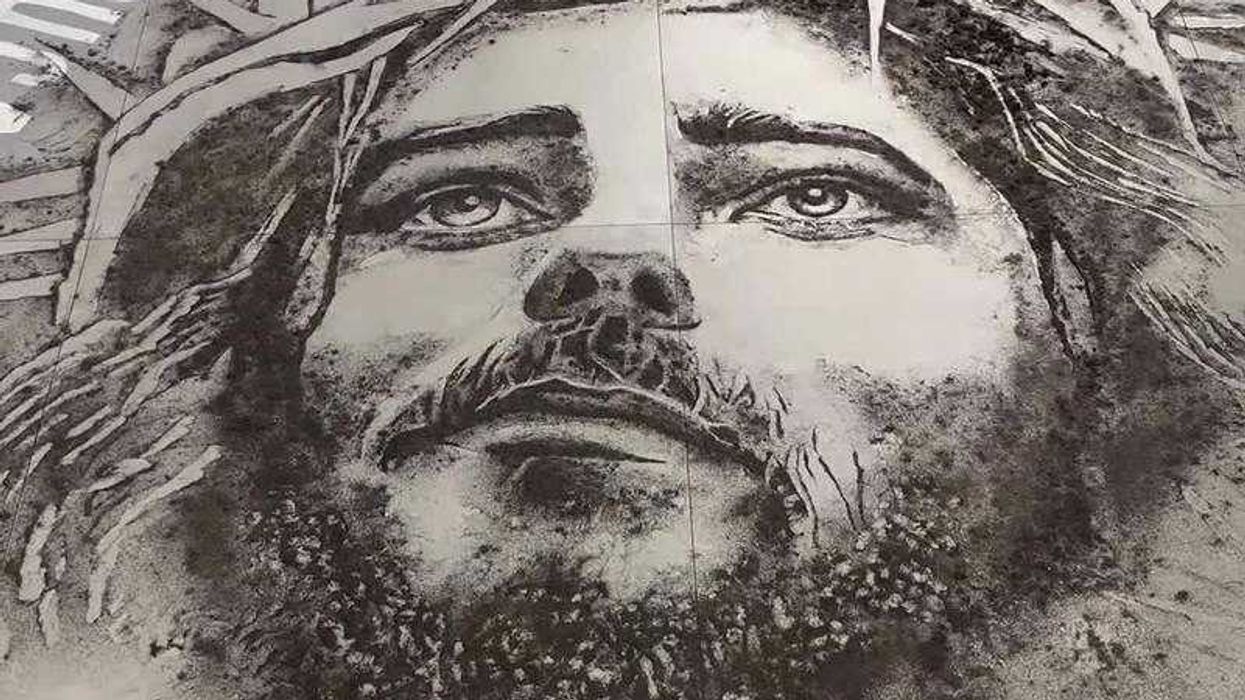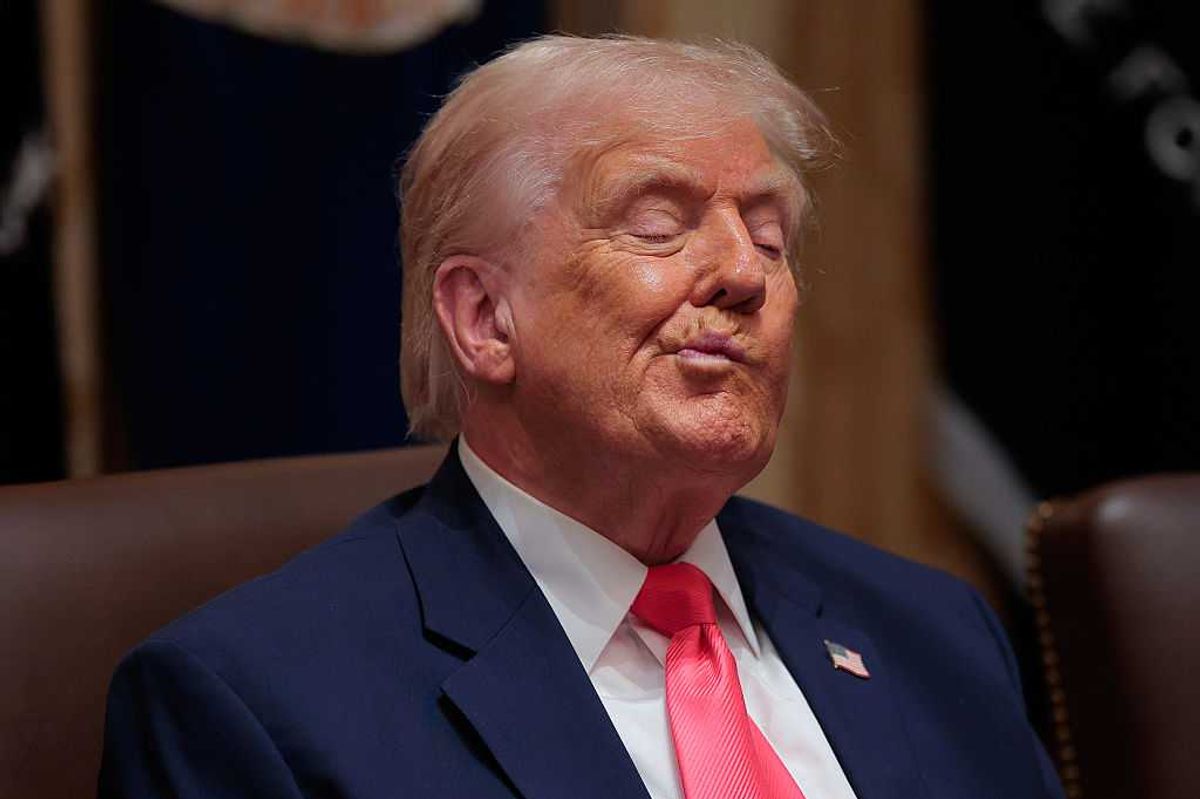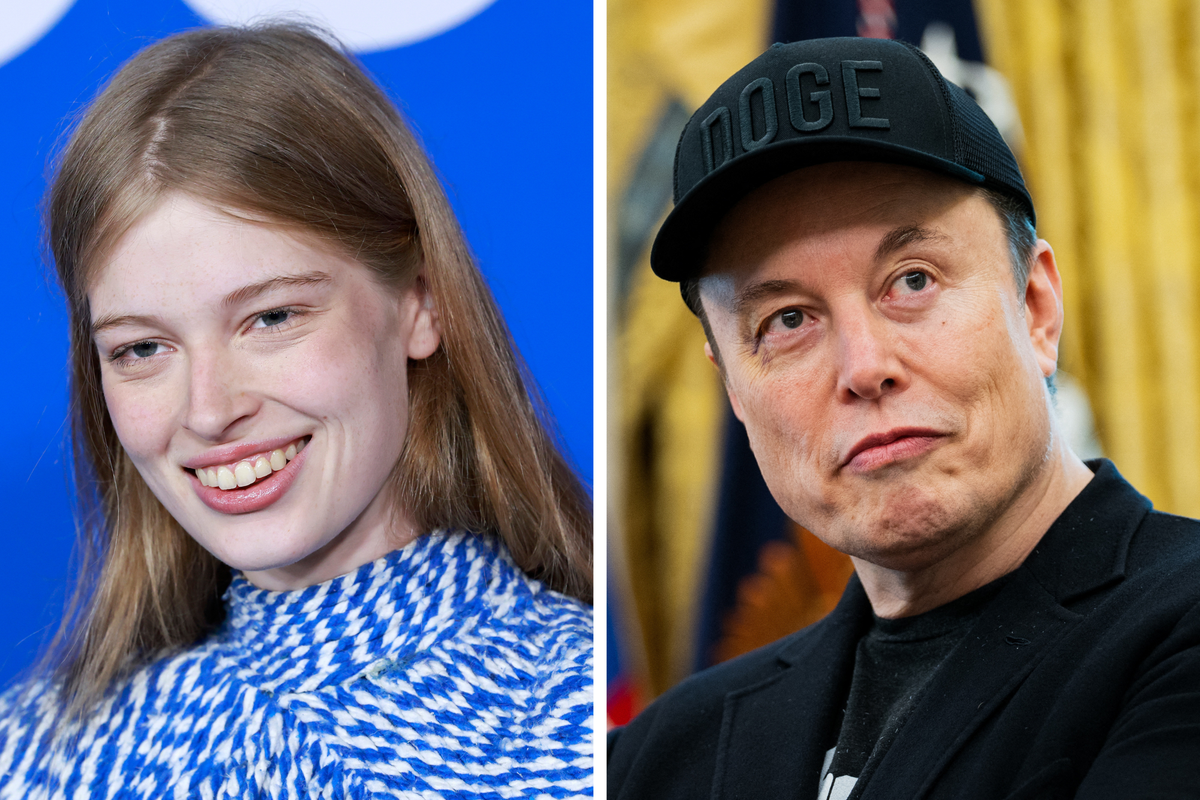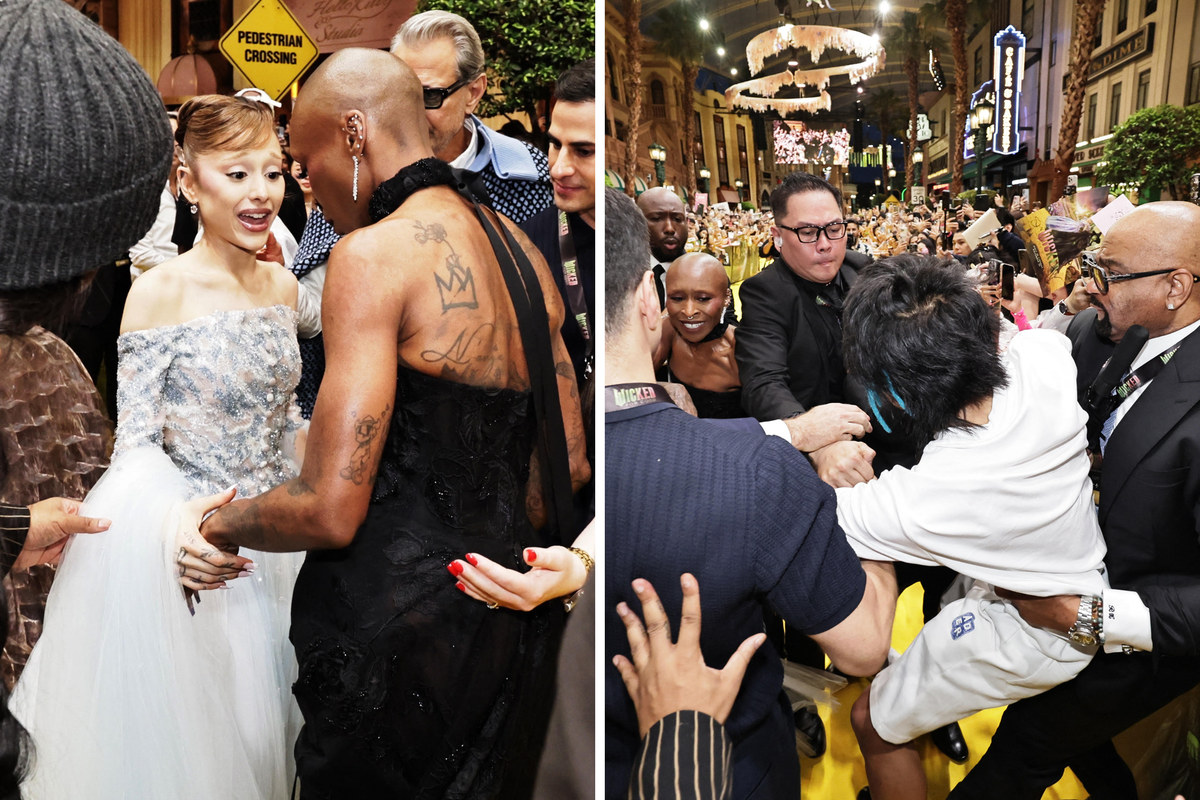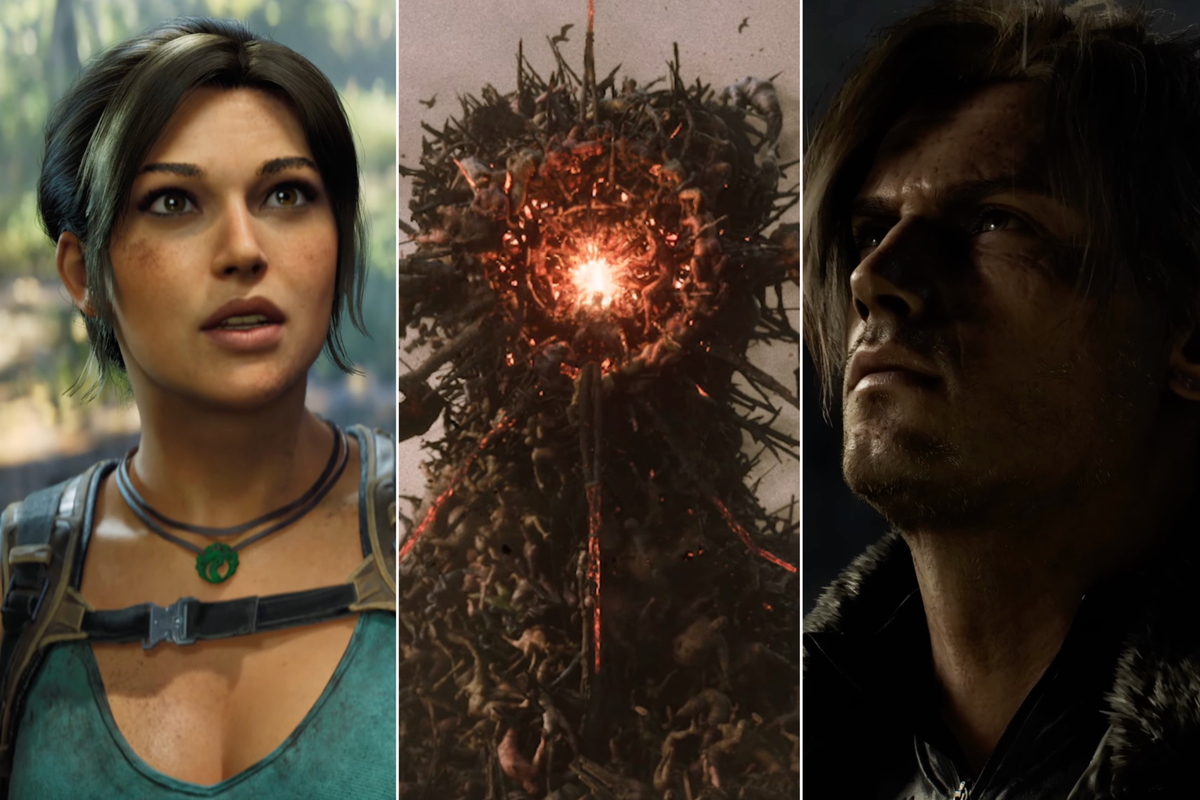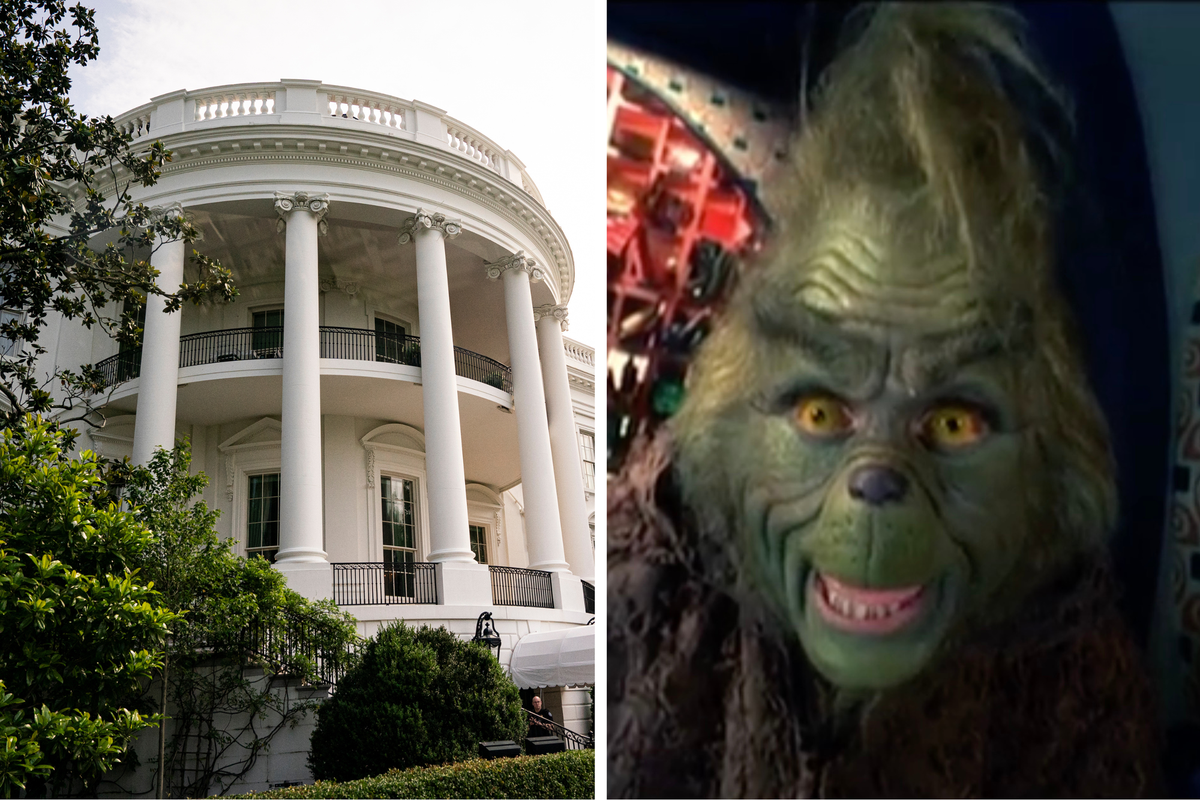Sinead Butler
Oct 28, 2025
Hair Artist Creates Stunning Floor Portrait of Jesus Christ
BVIRAL / VideoElephant
Do we finally have answers to one of Christianity's biggest mysteries?
A new forensic study has analysed blood patterns found on the Shroud of Turin, the 14-foot-long cloth believed to have wrapped Jesus' body after he was crucified, and with this, researchers have recreated the 'true' appearance of Jesus' Crown of Thorns through artificial intelligence.
According to the Bible, a crown of thorns was twisted on top of Jesus' head by Roman soldiers to mock him as he faced his death - here's what we know about this latest study.
The debate
Over the centuries (we're talking as far back as the Middle Ages), there has been much debate among scholars and scientists as to the shape of Jesus' Crown of Thorns that appears in art depictions of the crucifixion.
On the one hand, you have those who think it was a circlet or wreath shape, and on the other hand, others believe it covered his scalp in a cap or helmet shape.
Latest research
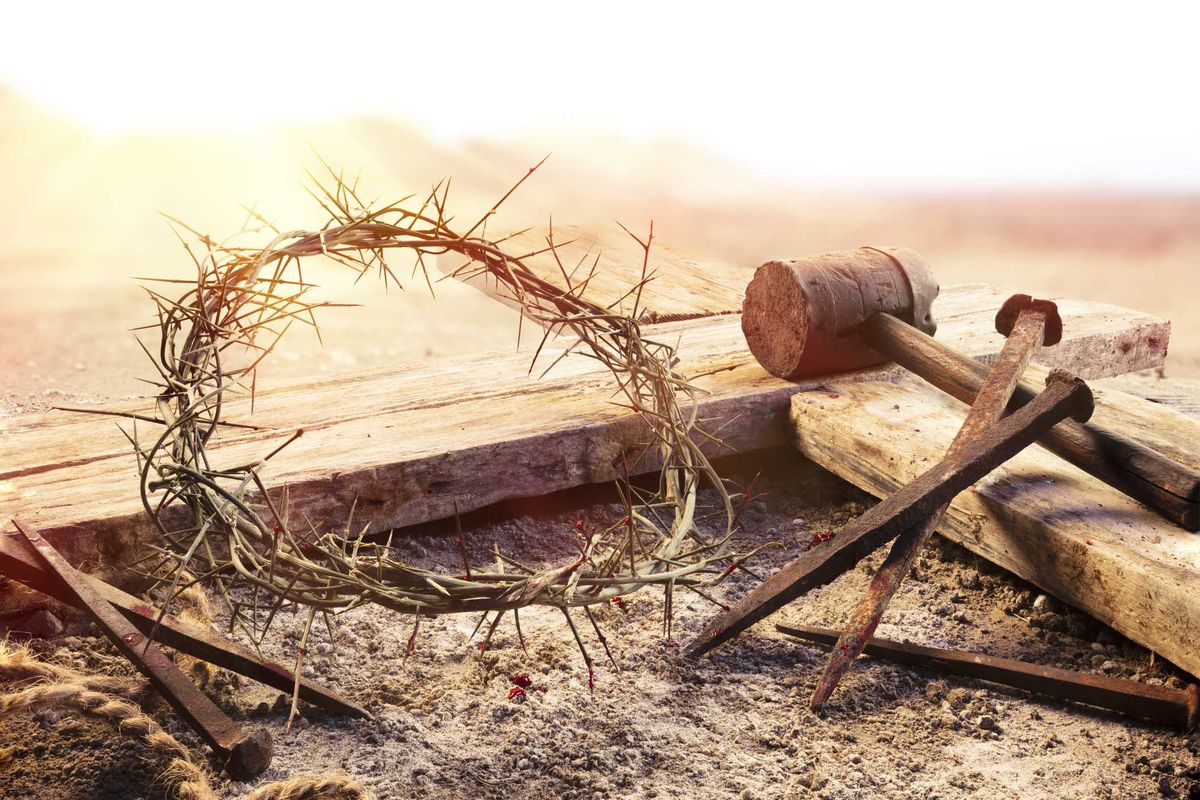
Now, researcher Otangelo Grasso could settle this age-old debate, as through analysing the blood patterns, his research - yet to be peer-reviewed - concludes Jesus was wearing a ring-like wreath.
The distributions of the bloodstains indicate concentrated wounds around the hairline, temples and back of the head, plus the analysis looked at geometric gaps in the cloth, whether each crown structure could be a possibility.
"The Shroud's head imagery shows concentrated bloodstains at the brow/temples and nape, with no vertex transfer across the non-contact bridge," the study explained, as per Mail Online. "This absence of blood at the very top of the head, they note, is a key clue that rules out a helmet-style crown."
That being said, researchers who back the cap style theory highlight 50 puncture wounds across the scalp, forehead and nape and argue a simple headband couldn't cause these types of injuries, but rather it supports the theory of a thorn helmet or cap being pressed down onto Jesus' head.
However, this is challenged by Grasso as he points to forensic studies of the Shroud showing scalp blood could be reactivated after death through hair wicking and handling. This means during burial, the blood could transfer across the head and face.
"Some droplets should still appear on the bridge unless the vertex wounds dried unusually fast or were fully contained by hair," Grasso explained.
"The circlet explains the same observations with fewer auxiliary assumptions."
What reconstruction tells us
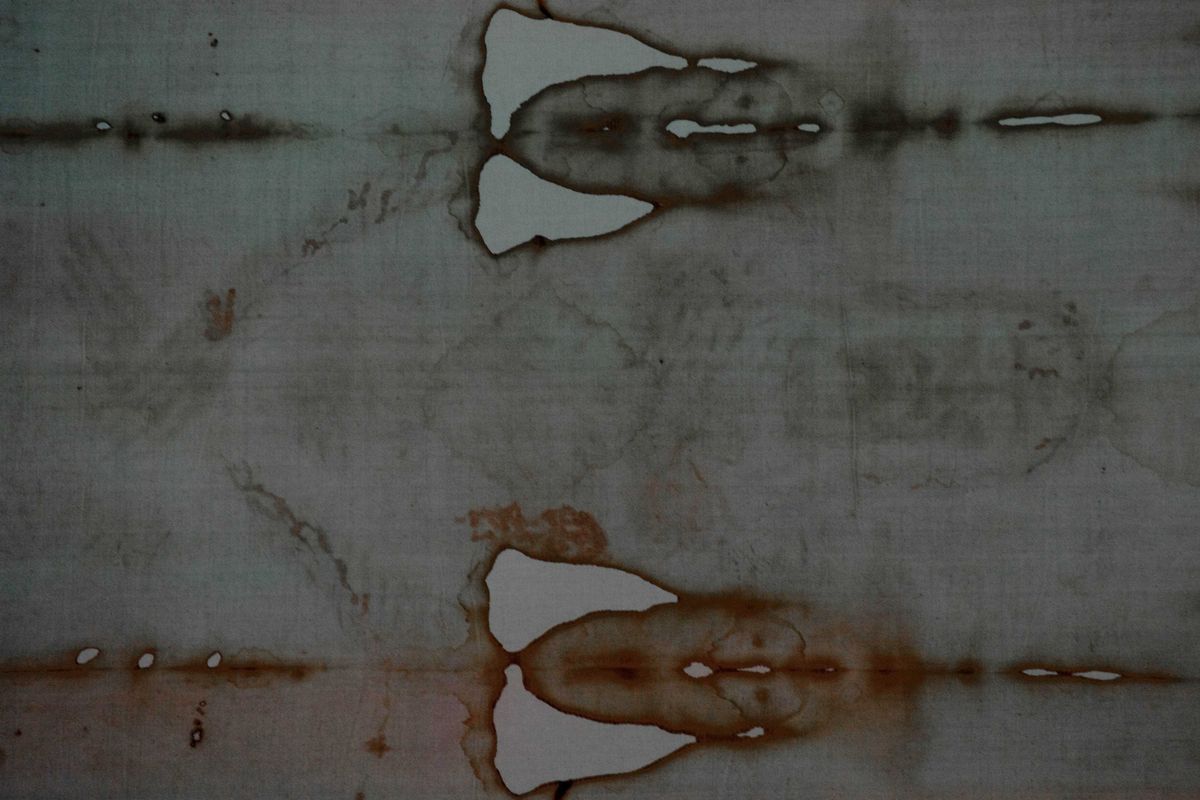
As part of the research, an AI-enhanced reconstruction was used to create an image of what the Crown of Thorns would look like based on the blood patterns.
From this, it's believed the perimeter staining was caused by a circlet with inward-pointing thorns with entrance-exit-re-entry puncture triads from single thorns. In addition, three to five centimetres above the hoop plane from broken thorn fragments were supra-band punctures due to forced seating.
Whereas, it would've been a more intricate, layered and interwoven lattice construction if it had been the helmet structure, which, in the paper it described how this would require "more than two hours and complex interlacing," compared to a circlet, which "can be fabricated with one structural join and inherent hoop stability."
With this in mind, the researchers believe the circlet is the most likely one as a result of the forensic and geometric data, as well as it being easier to make.
Research caution
Despite the geometric and forensic analysis, a helmet or cap-style construction cannot be completely ruled out, according to cautious researchers.
Even Grasso noted this could still be "possible" but added that this "demands auxiliary assumptions". For instance, "selective early vertex clotting" or all the blood from the top of the head being "wholly hair-contained."
Further understanding
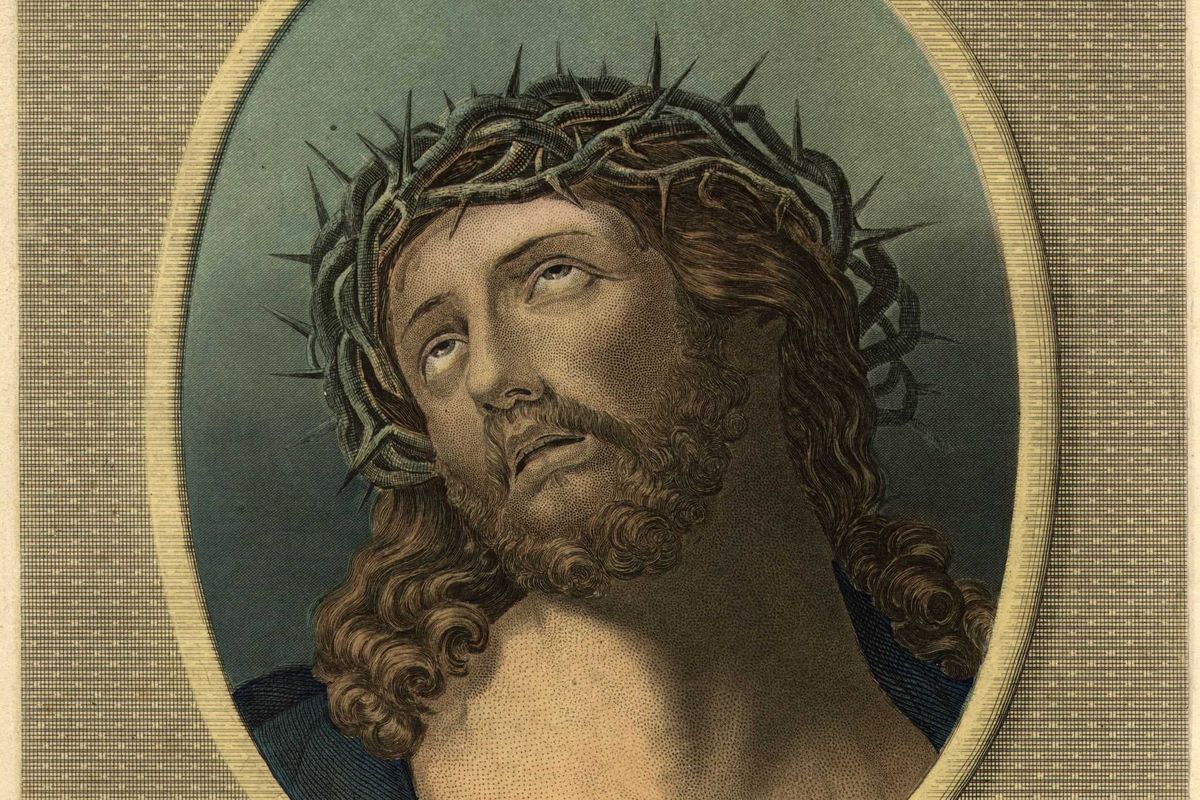
Thanks to modern science and technology, it can help us shed light and understanding on the past as seen with the AI-enhanced reconstruction and material testing with the Shroud of Turin.
As a result of his research, Grasso says we have a further understanding of what Jesus' headpiece looked like.
"Shroud head-stain mapping, a clean vertex bridge amid otherwise active head/face transfer potential, experimental inward-spine mechanics, posture-driven posterior elevation, and the build-time/manipulation differential together provide support for a circlet over a cap," the study concluded.
Elsewhere from Indy100, Historians are questioning if Jesus ever existed at all, and Church is using an AI Jesus hologram to take confessionals.
How to join the indy100's free WhatsApp channel
Sign up to our free indy100 weekly newsletter
Have your say in our news democracy. Click the upvote icon at the top of the page to help raise this article through the indy100 rankings.
Top 100
The Conversation (0)
